There are many business startup books out there. I’ll have to admit that I have not really read any of these types of book before other than how to correctly organize your business (an LLC vs a Inc for example).
I recently had a chance to read the book The Art of the Start by Guy Kawasaki as an assignment in my MBA program. Kawasaki has written numerous books on marketing, entrepreneurship, and beating your competition. He even worked at Apple back in the days of the Apple IIe. More recently, he’s formed his own venture capital company Garage.com.
Contents and the Basic Premise of “The Art of the Start”
The basic premise behind The Art of the Start is that anyone can start a successful business if they truly care about what they are doing and they feel that their business can bring true change and meaning to the world.
The book is organized into five main sections. The first section discusses developing an idea that has true meaning for you. The next section talks all about positioning, pitching the idea, and then writing a business plan. The third section talks about different strategies to manage the company’s finances in the critical first years, recruiting key talent, and raising capital. The “proliferation” section discusses how to really get the company off the ground by partnering, branding, and finding a “rainmaker”. Finally, there is a final section thrown in about networking and being a mensch.
What I Didn’t Like About “The Art of the Start”
The biggest gripe I have with this book is that it seems to be all things to all people. It seems like it wants to cover each and every facet of running a startup company from scratch. That is fine, but there is one main issue – the organization of the book is horrible. The topics and themes seem to jump all over the place!
If you look at the table of contents, the natural progression the author tries to take us through seems to make sense on paper. But, once you get into the book it seems like the author is flying around like a hummingbird. At the end of it, I felt like I had just come off some sort of Triple Spin ride you might find at a Six Flags.
There were lots of good gems and tidbits of information thrown out throughout the book, but the disorganization was just a bit too distracting for me.
What I Loved About “The Art of the Start”
What I loved the most about The Art of the Start was that there was a virtual treasure-trove of “gems” that could be used by just about anyone starting up their own company or trying to be a leader in a large corporation. Here are some of the great tips that I picked up on and plan to use:
- Make your business have true meaning for you – this will keep you in the game when things get tough (and they will).
- Have several women review the business model – most men with the Y-chromosome have the “kill the competition” mentality. This is great, but it doesn’t necessarily mean you have a good business model.
- When positioning an idea, make it personal – he uses this when discussing the idea of pet death insurance. The presentation went “9 million pets are euthanized each year”. He thought it could be much better positioned as “what will you do when Skippy needs to be put down?”
- 10/20/30 rule – When pitching or giving a presentation in general, use 10 slides max, 20 minutes, and 30 point font.
- Take the oldest person in the room and divide their age by two – this is the minimum font size you should use for presentations.
- The Business Plan should really be down played – only draft one once you’ve honed your pitch 10 or 20 times. Otherwise it is just throw-away work.
- Employee recruiting should be a continuous process – you need to give employees a reason to continue to work at your company or they’ll begin to look outside. Give them a good reason to stay with you.
- When giving a presentation, always tell stories that involve kids – your kids, friend’s kids, neighbor’s kids, co-worker’s kids, etc.. Everyone loves a story that involves kids.
- Interview you customer and ask what the want or need – then you change your offering or explain how your product/service can give the customers what they need!
- Plant many flowers – If customers begin to use your product for an unintended application then let them and encourage it!
The Art of the Start – Rating
4/5 Stars – A little poorly organized, but overall a good read.
Who Should Read “The Art of the Start”
I would suggest that anyone that has ever been interested in starting or running their own company check out The Art of the Start. As I said, the organization is a bit cumbersome, but there are some real gems in the book that can be of help to just about anyone trying to start their own business.
Does anyone else have experience with a good business startup book??

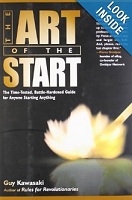
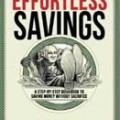
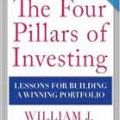
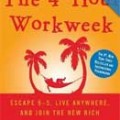
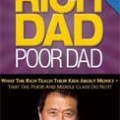




I have read two book reviews this week and am so happy because both books are worth checking out. Thanks for this excellent review, Derek.
Marissa @ Thirty Six Months recently posted…How to Deal with Vices
Marissa,
You should check it out – it’s very helpful overall!
Reading this post of yours makes me want to grab a copy of the book, Derek. So glad you wrote about it.
Marissa @ Finance Triggers recently posted…Tools that make Personal Finance easy
Wonderful review and the book sounds like its packed with some real nuggets of wisdom from a veteran. My take away: Make your business have true meaning for you – this will keep you in the game when things get tough…
A lot of people focus on the money and fail miserably and I couldn’t agree more, passion and a conviction of your ideas will take you way far and the money seems to sort itself more often than not.
How is your MBA experience so far?
Simon @ Modest Money recently posted…Mint Review – Detailed Review of Mint.com Software
Simon,
Good reflection on the money vs. meaning take away.
The MBA experience is good so far. I’d highly recommend it if you have the $$$ to foot the bill or work for a company that will cover the cost. If you’re paying with a student loan, I’d be hard pressed to say that the trade-off is worth it.
Great review of the book and liked the tips which you have picked up. The first point “Make your business have true meaning for you” is so true and meaningful
An excellent book for those starting a business or non-profit, stressing function over form and action over planning. The lessons apply to organizations whether they’re bootstrapping or seeking funding from venture capitalists or angel investors. Kawasaki includes plenty of historical examples and firsthand experience, making this a practical real-world resource that’s more valuable than a simply conceptual textbook.
Moona,
I agree with you – it is very practical. I’ve used it to help me in many ways in my small business – I only wish I had read it earlier and saved myself from making many mistakes!